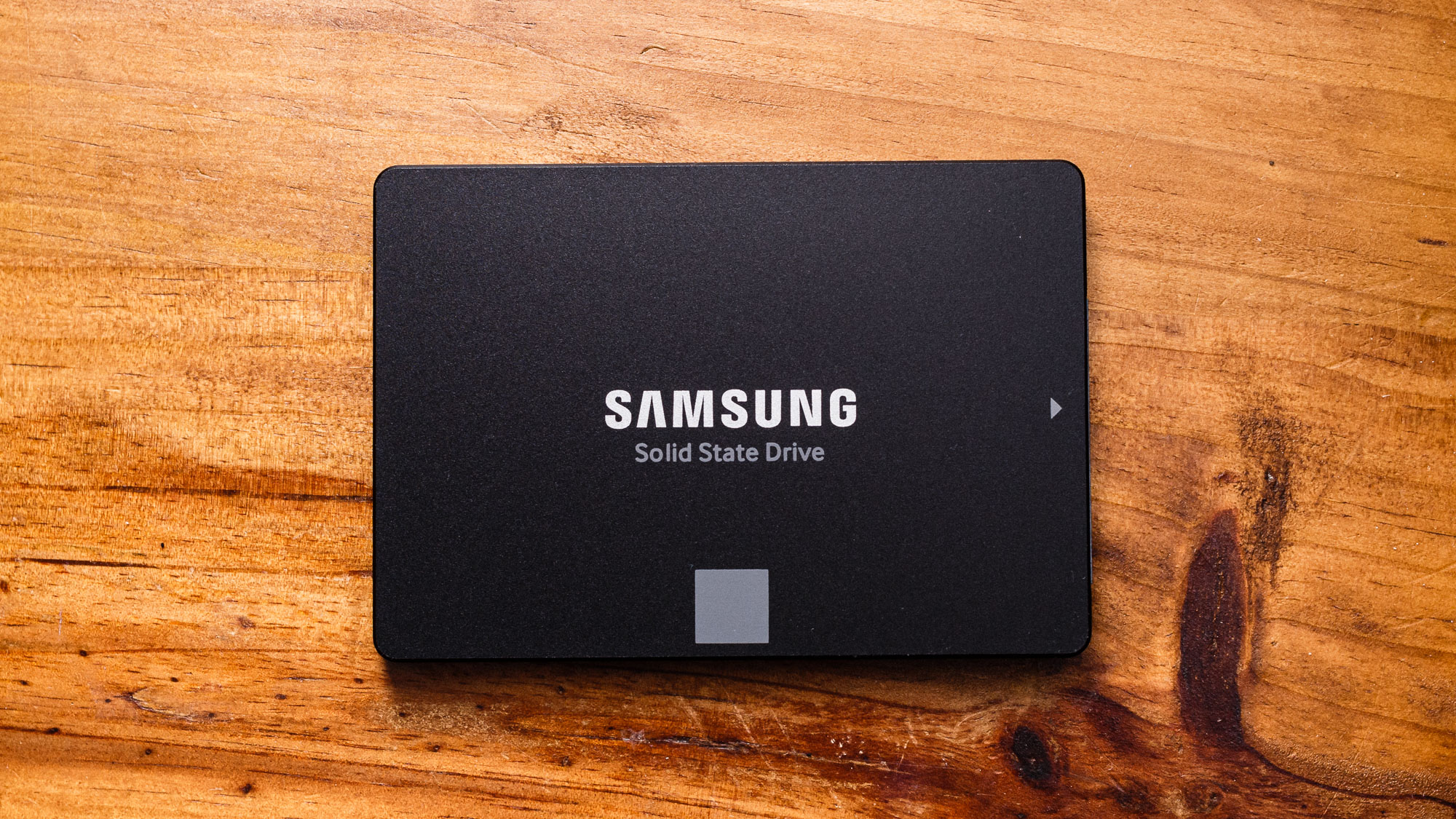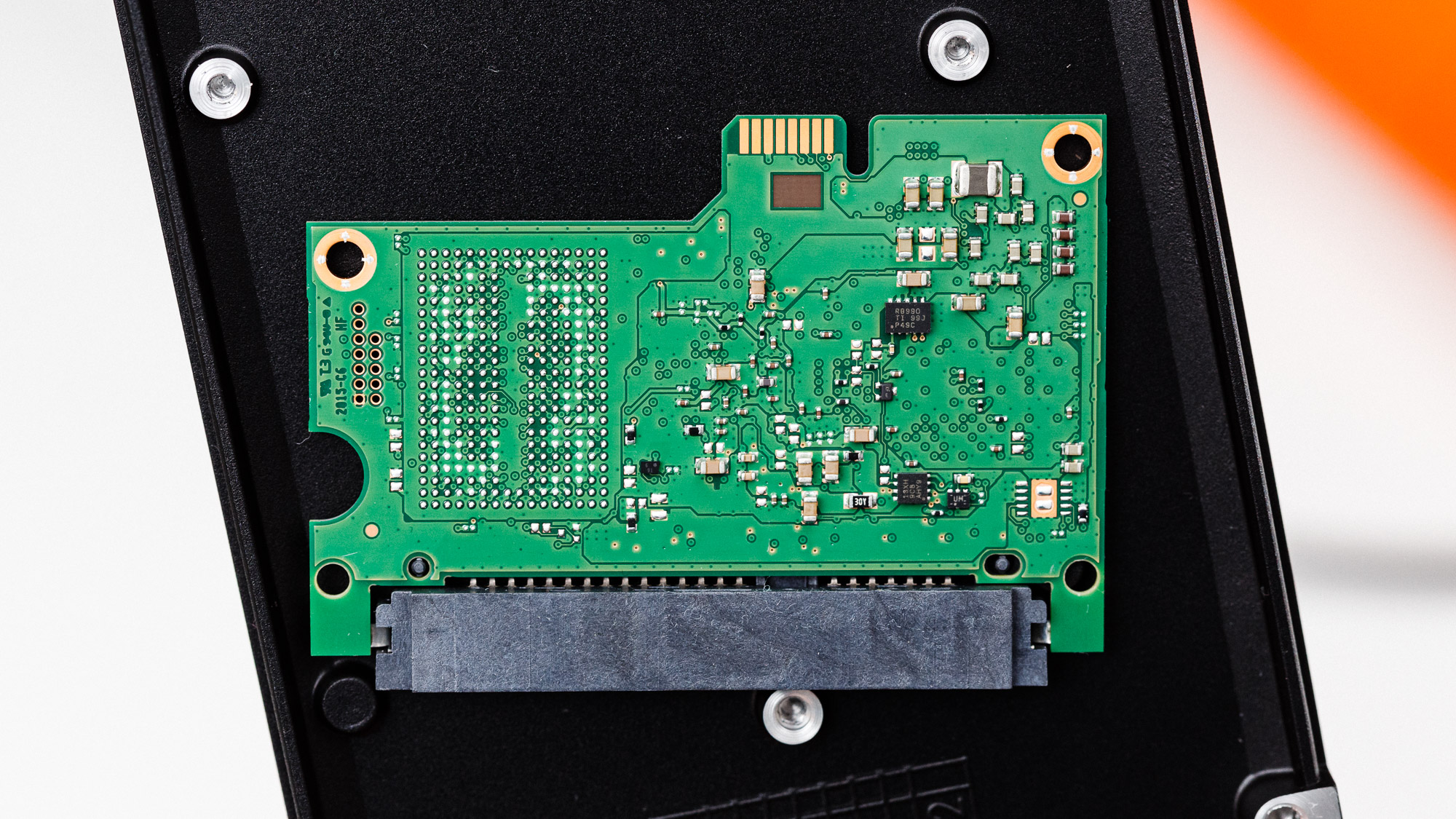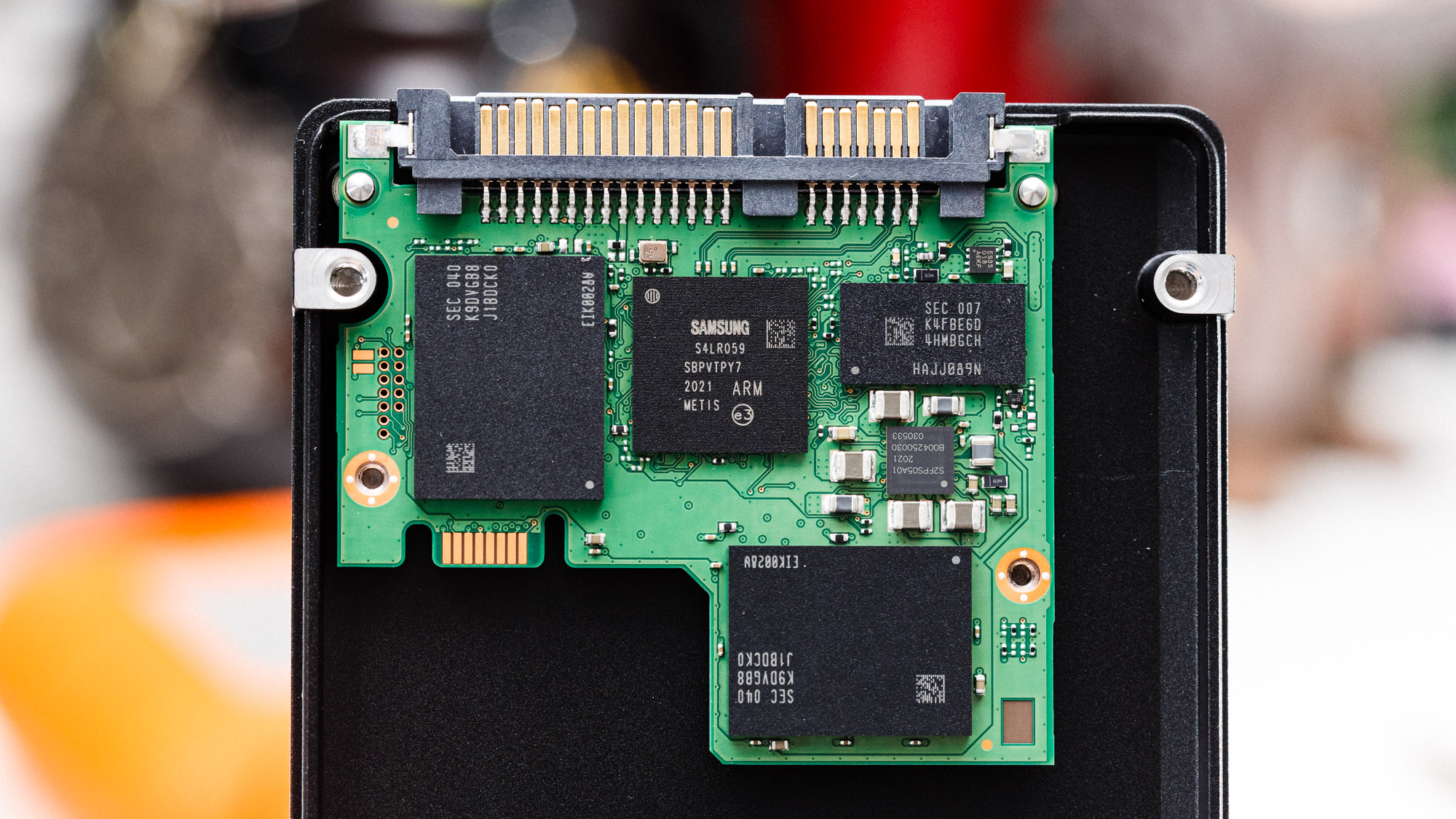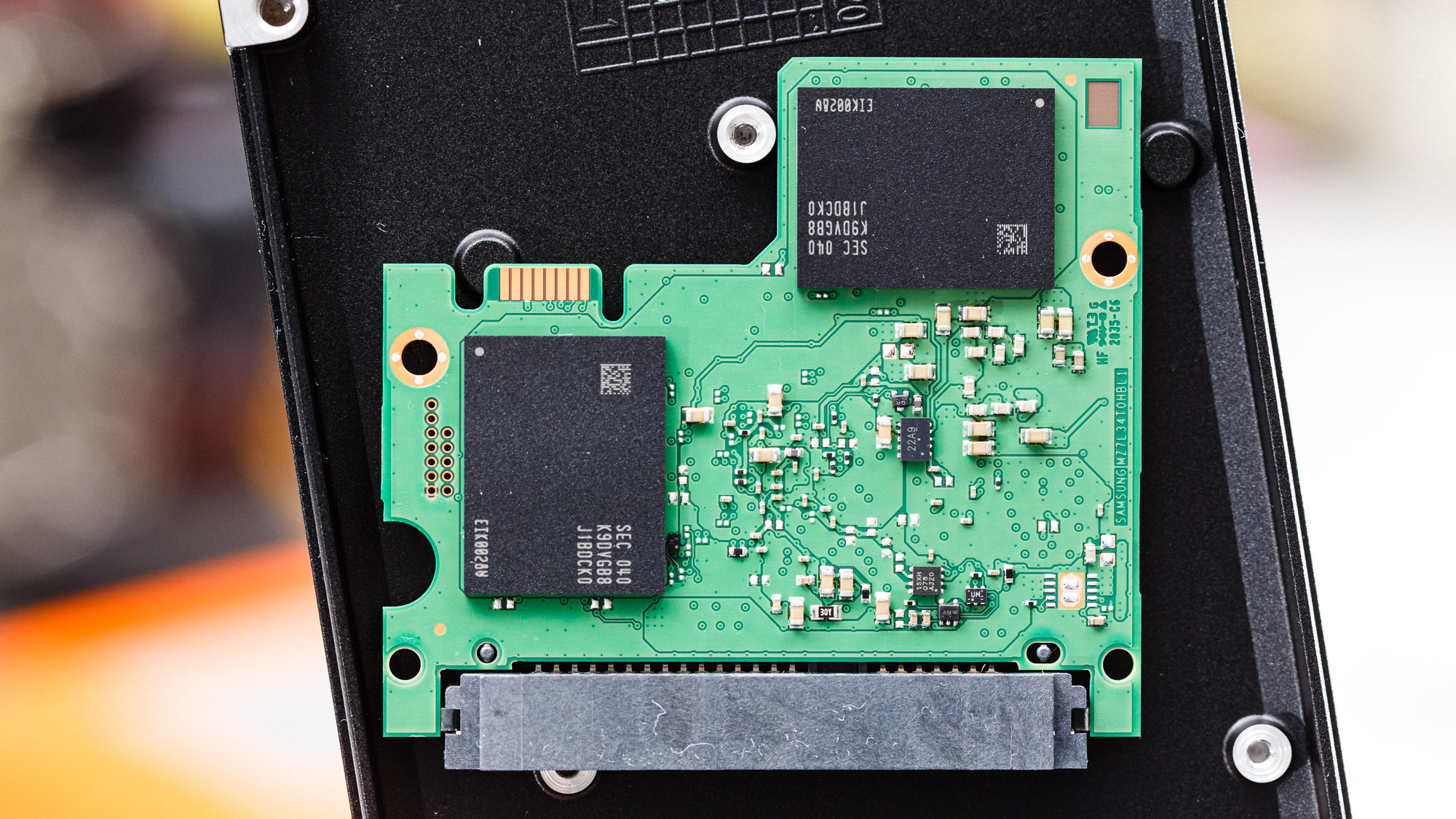Tom's Hardware Verdict
Samsung’s 4TB 870 EVO is not only spacious, but it also offers plenty of speed and is very efficient under any workload. It’s a great choice for those in need of a SATA upgrade.
Pros
- +
Reliable and responsive architecture
- +
Appealing aesthetics
- +
AES 256-bit encryption
- +
Capacities up to 4TB
- +
5-year warranty
- +
Software suite
Cons
- -
Premium price
Why you can trust Tom's Hardware
Update 1/30/2021: We have updated this article with new testing for the 4TB Samsung 870 EVO SATA SSD on page 2.
Original Review published 1/21/2021:
Samsung’s 870 EVO succeeds the hottest-selling SATA SSD on the market, the company's own 860 EVO, so it has big shoes to fill. Normally, this would be a challenge, but for Samsung, it's like clockwork: Samsung’s 870 EVO is now our top pick for those looking for the best consumer SATA SSD on the market.
Offering up high-ranking performance and efficiency, spacious capacities, and well regarded by many for high reliability, Samsung’s SSDs have earned quite the following and reputation over the years. The company hopes to build on its reputation with the addition of Samsung’s 870 EVO to its lineup that's built on years of the company's flash expertise.
Samsung’s 870 EVO is the most refined version yet, courtesy of its latest 6th-gen 128-Layer V-NAND TLC flash and an updated MKX ‘Metis’ SATA 6Gbps controller. Still bottlenecked by the SATA interface, the new SSD doesn’t stand a chance against the latest NVMe SSDs. Still, Samsung says the 870 EVO offers up to 38% higher performance for everyday computing tasks over its predecessor, and the 250GB model sees an up to 30% improvement in sustained write performance.
Specifications
| Product | 870 EVO 250GB | 870 EVO 500GB | 870 EVO 1TB | 870 EVO 2TB | 870 EVO 4TB |
|---|---|---|---|---|---|
| Pricing | $39.99 | $69.99 | $129.99 | $249.99 | $479.99 |
| Capacity (User / Raw) | 250GB / 256GB | 500GB / 512GB | 1000GB / 1024GB | 2000GB / 2048GB | 4000GB / 4096GB |
| Form Factor | 2.5" 7mm | 2.5" 7mm | 2.5" 7mm | 2.5" 7mm | 2.5" 7mm |
| Interface / Protocol | SATA 6 Gbps / AHCI | SATA 6 Gbps / AHCI | SATA 6 Gbps / AHCI | SATA 6 Gbps / AHCI | SATA 6 Gbps / AHCI |
| Controller | Samsung MKX 'Metis' | Samsung MKX 'Metis' | Samsung MKX 'Metis' | Samsung MKX 'Metis' | Samsung MKX 'Metis' |
| DRAM | Samsung LPDDR4 | Samsung LPDDR4 | Samsung LPDDR4 | Samsung LPDDR4 | Samsung LPDDR4 |
| Memory | Samsung 128L TLC | Samsung 128L TLC | Samsung 128L TLC | Samsung 128L TLC | Samsung 128L TLC |
| Sequential Read | 560 MBps | 560 MBps | 560 MBps | 560 MBps | 560 MBps |
| Sequential Write | 530 MBps | 530 MBps | 530 MBps | 530 MBps | 530 MBps |
| Random Read | 98,000 IOPS | 98,000 IOPS | 98,000 IOPS | 98,000 IOPS | 98,000 IOPS |
| Random Write | 88,000 IOPS | 88,000 IOPS | 88,000 IOPS | 88,000 IOPS | 88,000 IOPS |
| Security | AES 256-bit encryption | AES 256-bit encryption | AES 256-bit encryption | AES 256-bit encryption | AES 256-bit encryption |
| Endurance (TBW) | 150 TB | 300 TB | 600 TB | 1,200 TB | 2,400 TB |
| Part Number | MZ-77E250 | MZ-77E500 | MZ-77E1T0 | MZ-77E2T0 | MZ-77E4T0 |
| Warranty | 5-Years | 5-Years | 5-Years | 5-Years | 5-Years |
Samsung’s 870 EVO is available in almost every capacity you could need, ranging from sizes as small as 250GB up to 4TB for the data hoarders who need the extra space. Each capacity comes at premium MSRPs, with prices ranging from $0.12-$0.16 per gigabyte.
Samsung rates the 870 EVO to deliver sequential speeds of up to 560/530 MBps and sustain up to 98,000/88,000 random read/write IOPS across the board. In regards to the Intelligent TurboWrite algorithm, Samsung did not disclose any changes.
Get Tom's Hardware's best news and in-depth reviews, straight to your inbox.
| Capacity | 250GB | 500GB | 1TB | 2TB | 4TB |
| SLC Write Cache | 12 GB | 22 GB | 42 GB | 78 GB | 78 GB |
Each capacity should measure similar to that of the 860 EVO - typically, it will have a 6GB-12GB of static SLC cache paired with a dynamic SLC cache that spans tens of gigabytes. Speed degradation was not apparent in our testing of the 1TB and 4TB model, but it may impact the smaller models.
The 870 EVO is over-provisioned by 9%, with most of that space set aside for controller use and background block management. Samsung backs the 870 EVO with a five-year warranty, and the drives can absorb up to 150TB of write data per 250GB of capacity, meaning the 4TB model is rated to handle 2,400 TB of writes within its warranty period.
Not only is it rated to be endurant, but it's also potentially very secure with the option to use TCG Opal 2.0-compliant AES 256-bit full disk encryption for those whose data needs the added protection from prying eyes.
Software and Accessories
Samsung supports customers with data migration software for easy cloning and the Samsung Magician SSD toolbox. Samsung Magician allows you to monitor your SSD’s health via reading its S.M.A.R.T. data report, upgrade the SSD’s firmware if applicable, secure erase, and even benchmark your drives.
A Closer Look






Samsung’s 870 EVO comes in a 2.5” 7mm form factor and has a sleek, black anodized aluminum casing, that gives it a quality feel over cheaper competitors.
Opening up the 870 EVO reveals very tiny PCBs, not only for the 1TB model but also the 4TB model.
Samsung’s 870 EVO is powered by the company’s MKX ‘Metis’ SATA 6Gbps controller, the same one powering the 870 QVO. The company did not disclose details, like how many or what type of cores the controller has, their speeds, or what process node it was built on. We do know it's based on an ARM architecture (possibly tri-core like the MJX ‘Maru’ controller before it) and leverages DRAM for FTL metadata caching. Samsung’s own LPDDR4 DRAM resides next to the controller, measuring 1GB on our 1TB sample and 4GB on our 4TB sample.

The controller also has eight NAND flash channels to maintain high levels of interleaving with Samsung’s 6th-gen 512Gb 128-Layer V-NAND TLC. This new flash offers very low latency, communicating with the controller at Toggle DDR4.0 speeds up to 1.4 GTps. Like the company’s previous flash, it is still dual-plane, but due to sub-planes, the die supports very fast performance on par with or exceeding that of most competitors.
MORE: Best SSDs
MORE: How We Test HDDs And SSDs
MORE: All SSD Content

Sean is a Contributing Editor at Tom’s Hardware US, covering storage hardware.
-
mdd1963 It would be nice to see ~ $50 trimmed from the 2 TB variant's price, to be sure...; at the current MSRP, the MX500 would get my nod...Reply
(It would also be nice for someone to make some faster SATA spec ports...SATA4, at 12 Gbps/~1100 MB/sec? Not needed for spinning drives, of course, but If not that, then Intel needs to push a cabled NVME replacement standard so that more mainboards can have more smallish internal ports with sufficient speed, which means much more lanes available. Even one PCI-E 4.0 lane should give 1100 MB/sec, correct? -
Altsuperego Replymdd1963 said:It would be nice to see ~ $50 trimmed from the 2 TB variant's price, to be sure...; at the current MSRP, the MX500 would get my nod...
(It would also be nice for someone to make some faster SATA spec ports...SATA4, at 12 Gbps/~1100 MB/sec? Not needed for spinning drives, of course, but If not that, then Intel needs to push a cabled NVME replacement standard so that more mainboards...
It would be nice, even internal usb3.1 would suffice, but given how fast intel works...
I have to say my 860's real world speeds are way less than advertised and I'm not the only one -
USAFRet Reply
What performance are you getting, and how are you testing this?Altsuperego said:I have to say my 860's real world speeds are way less than advertised and I'm not the only one
All my Samsung 8xx seem to still be doing fine. -
Altsuperego About 200mbps max writes and 40ish for random. Reads are ok. 2tb from amazon. Not sure if I should rma.Reply -
USAFRet Reply
Wow.Altsuperego said:About 200mbps max writes and 40ish for random. Reads are ok. 2tb from amazon. Not sure if I should rma.
All mine are still reporting mid 500's, even the 6 year old 840 EVOs. -
Altsuperego ReplyUSAFRet said:Wow.
All mine are still reporting mid 500's, even the 6 year old 840 EVOs.
Maybe I got a dud because I've also had several -
USAFRet Reply
Testing with what tool? Samsung Magician?Altsuperego said:About 200mbps max writes and 40ish for random. Reads are ok. 2tb from amazon. Not sure if I should rma. -
Co BIY Micron responded to that right quick -Reply
Crucial MX500 2 TB just dropped to $199 at Amazon.
Thanks Samsung! -
ph00ny Good thing about samsung is that they participate in corporate discount programs making this lot cheaper for meReply -
Sergei Tachenov Reply
What would be the point if we have NVMe? It may be a dumb question, but I'm really new to NVMe, and I see SATA as a legacy interface now. Sure thing, there are still rack servers with SATA around, but when talking purely about regular desktop rigs, why the need for SATA at all? I bought my 850 EVO solely because I have no NVMe at all, but for my new rig I plan to replace it with an NVMe one and forget my case even has 2.5"/3.5" mount points. Am I wrong somehow?mdd1963 said:(It would also be nice for someone to make some faster SATA spec ports...SATA4, at 12 Gbps/~1100 MB/sec? Not needed for spinning drives, of course, but If not that, then Intel needs to push a cabled NVME replacement standard so that more mainboards can have more smallish internal ports with sufficient speed, which means much more lanes available. Even one PCI-E 4.0 lane should give 1100 MB/sec, correct?
